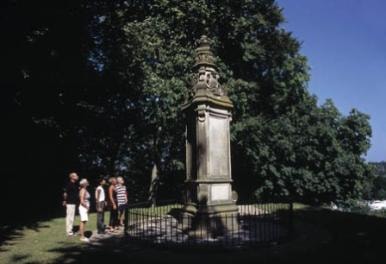
The Sand Drift Monument in Tisvilde
In the forest of Tisvilde Hegn stands the Sand Drift Monument – a reminder of a time when drifting sand threatened both landscape and livelihood. Here, nature and heritage meet.
From Fertile Coast to Barren Dunes
The Onset of Sand Drift
Starting in the 1500s, vast amounts of sand were blown inland by wind and sea. Fertile land turned to desert, farms were buried, and many residents were forced to abandon the area.
A Struggle Against the Elements
Human Intervention
By the mid-1700s, efforts began to stop the sand drift. Authorities and local people worked together to plant trees and shrubs, gradually giving rise to what is now Tisvilde Hegn.
A Monument is Raised
In 1738, the Sand Drift Monument was erected – a granite column symbolising the triumph over the destructive forces of sand. It honours the commitment and collaboration that preserved the land.
A Modern Landmark With Historic Meaning
A Place for Reflection
Tisvildeleje is now a popular summer destination, but the monument still reminds visitors of past struggles. It stands as a lasting symbol of the importance of protecting nature and working together for a sustainable future.